360° Case Study: Burlington Parks Master Plan
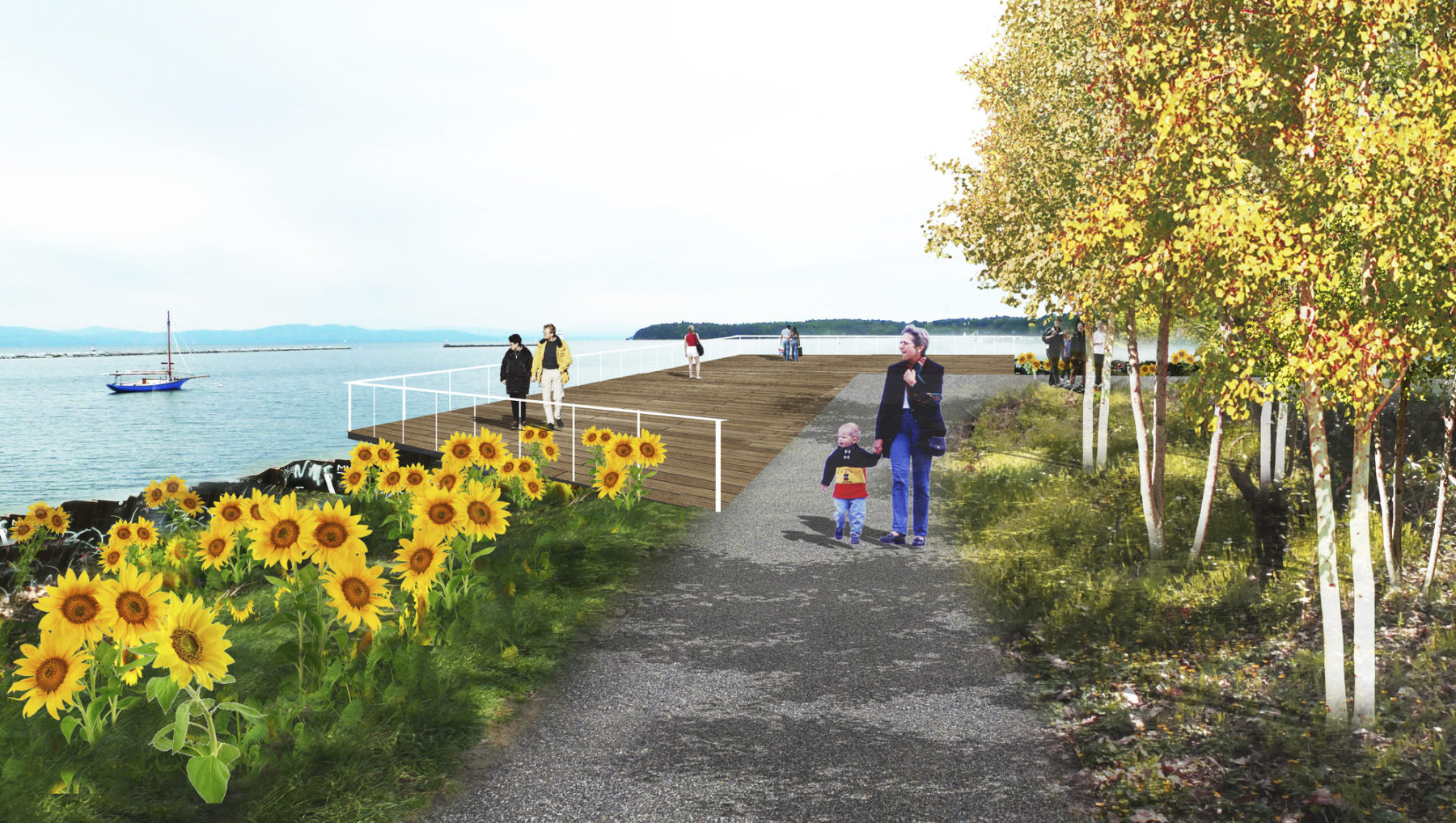
 Sasaki
Sasaki

Sasaki began working with the Burlington Parks Recreation and Waterfront (BPRW) in 2012 to develop a comprehensive master plan the city’s parks system. The BPRW maintains 40 parks in the city—a significant charge for a municipal department in a city of 42,000. Early in the planning process, the team identified several facets that were key to ensuring the development of a successful plan. Here, members of the Sasaki project team, as well as the BPRW’s Director, Jesse Bridges, give insights into various focal points of the planning process and final master plan.
Over the past three years, we have focused on making sure that our plan is not just a pretty document, but a true guide for shaping improvements and managing operations. We knew we had to generate and maintain momentum, so we focused on implementing quick wins even as the ink was drying. One of the most positive and lasting outcomes that’s coming out of our master planning and rebranding work is that we have strengthened our relationships with the community and established greater cohesion within our organization. It’s allowed us to implement change quickly.
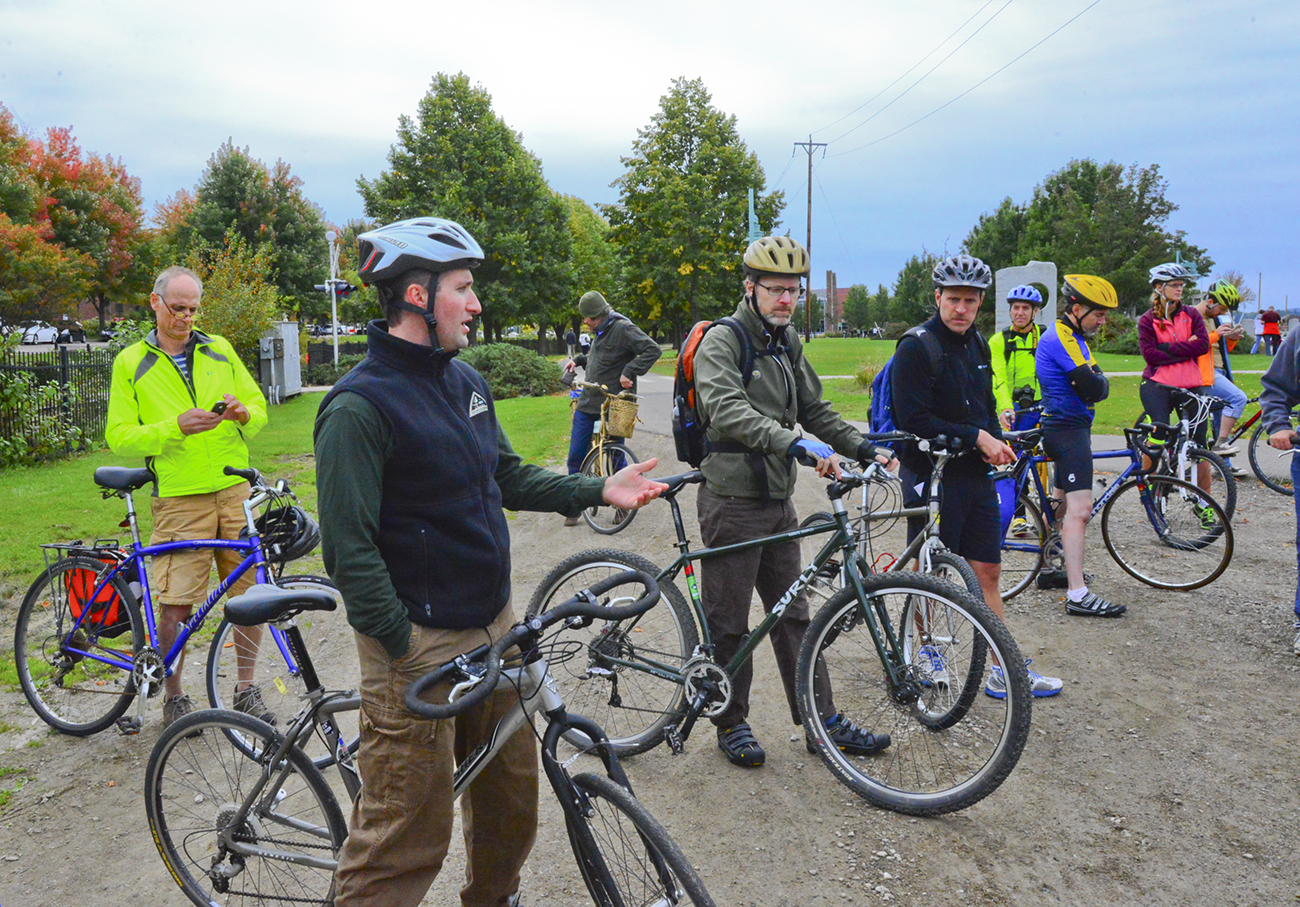
Bridges addresses participants in a community outreach bike ride
The Burlington community has responded really positively to both our recent improvements and the way we now communicate what we stand for, what our priorities are, and why we’re doing the things that we’re doing. By explaining our aspirations toward social equity, health and wellness, and conservation while also discussing the realities we face as a small department supporting forty parks, we have been able to elevate this discourse.
It also helps to have a brand that shows, at a glance, that we run clean, quality parks, and that we are a high-functioning, modern, and innovative organization. Not a lot of parks and recreation departments can convey or deliver upon that like we are now prepared to do. It feels good to know that we not only have a plan, but that we’re also prepared as an organization to move nimbly to keep our parks vibrant, healthy, and full of people enjoying them.
Burlington, like many small college towns, is set within an incredible natural context. From the crest of the city’s high point, a visitor can look to west to the blue-gray horizon of Lake Champlain, crowned with the majestic Adirondacks—or east to the skyline of the Green Mountain range. As a unique counterpoint to the vast recreational offerings of the regional landscape, the city’s parks provide places for community and social gathering. The master plan allowed us to make that role much more clear and visible—and to make recommendations for the park system to enhance its performance in this realm.
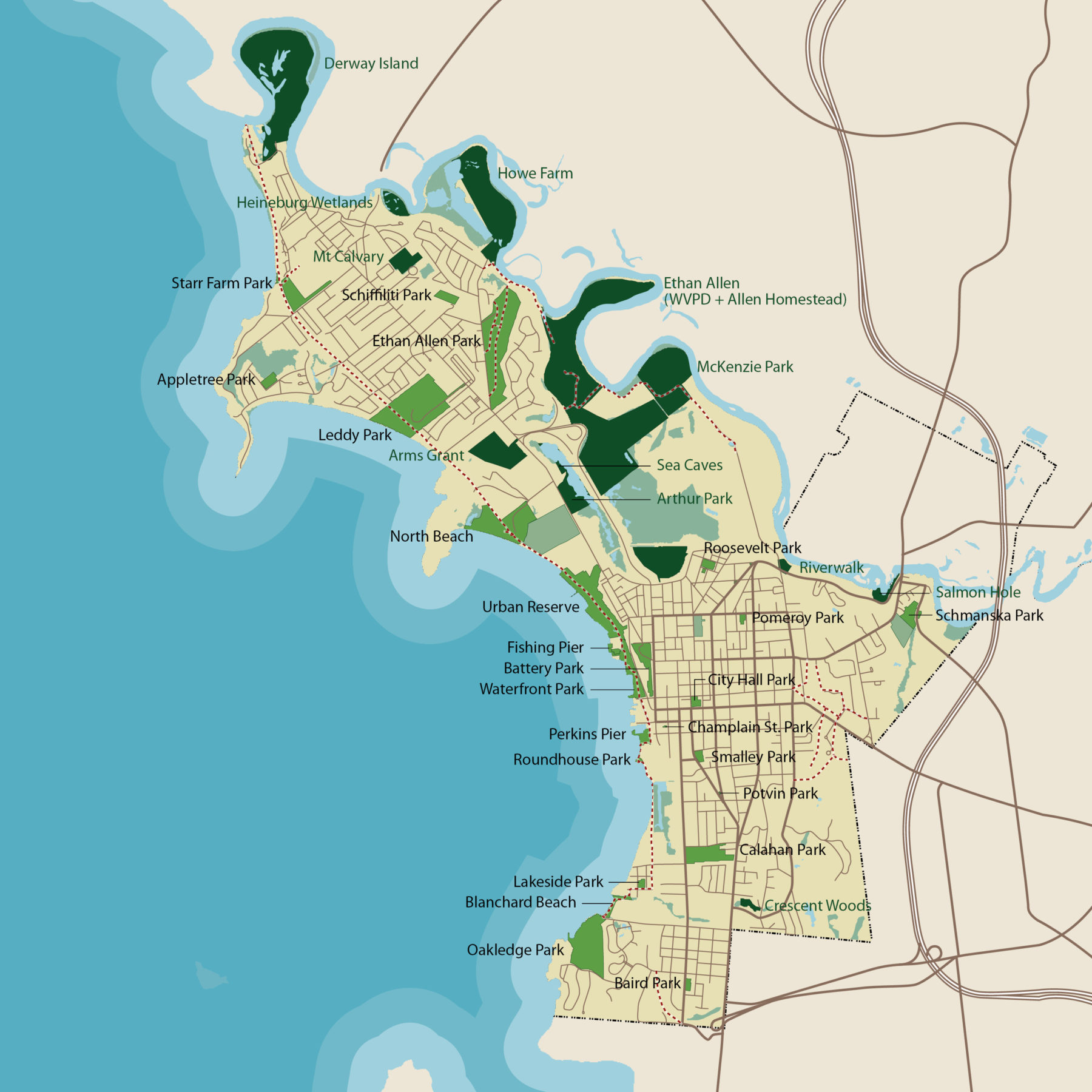
The BPRW operates 40 parks, many with water frontage
The understanding and appreciation of the natural context also gives greater value to the park system as the city’s green infrastructure. Residents of Burlington, in efforts to preserve the environmental quality of their setting, seek opportunities for innovative and integrated sustainability. For us, this was an exciting charge. One place where we were truly able to go beyond the traditional boundaries of a parks planning process was in our stormwater recommendations. Working closely with multiple departments in the city, the master planning team offered system-wide stormwater strategies to address water quantity and quality issues as part of all future park improvements.
A central element of Burlington’s Master Plan included an organizational and leadership assessment. Completing this as part of a planning process is important, as it provides the framework for the successful implementation of the plan. While master plans deal primarily with physical infrastructure, the organizational review assessed the leadership and operational infrastructure. This becomes critically important during implementation, as effective leadership is necessary for successful deployment of a plan.
The review focused on staffing, structure, and positioning operations for the future. Additionally, the analysis included comparative analyses of other park and recreation agencies nationwide to determine similarities and differences between Burlington and other similarly-sized agencies. The results of this process led to the development of core values and a mission statement. A growth vision was also developed that focused on equity and cultural competency. This helps to ensure employee alignment with the future direction of the department.
The organizational structure was significantly changed to better align with how to best serve park patrons. Changes included the development of new positions, and increasing the capacity for events, facility maintenance, and seasonal operations. Brand/web/wayfinding developments were also significant part of the process, as am engaging means of reinforcing internal and external story-telling and outreach.
The best projects come from creating and sharing ideas amongst many people—designers and planners, parks staff and city leadership, long-time residents and newcomers to the community all have vital viewpoints to contribute. Burlington’s plan was framed around seven system themes, representing several facets of the Parks, Recreation and Waterfront Departments’ reach. “People” was one of these core themes, emphasizing the importance of recognizing Burlington’s culture, community, and partnerships. Throughout the planning process, approaches to collaboration and engagement ensured that community input influenced the ultimate vision and recommendations. A household survey, an interactive online tool, a bike ride to encounter and interview patrons, and several public meetings provided continuous outreach to the community.
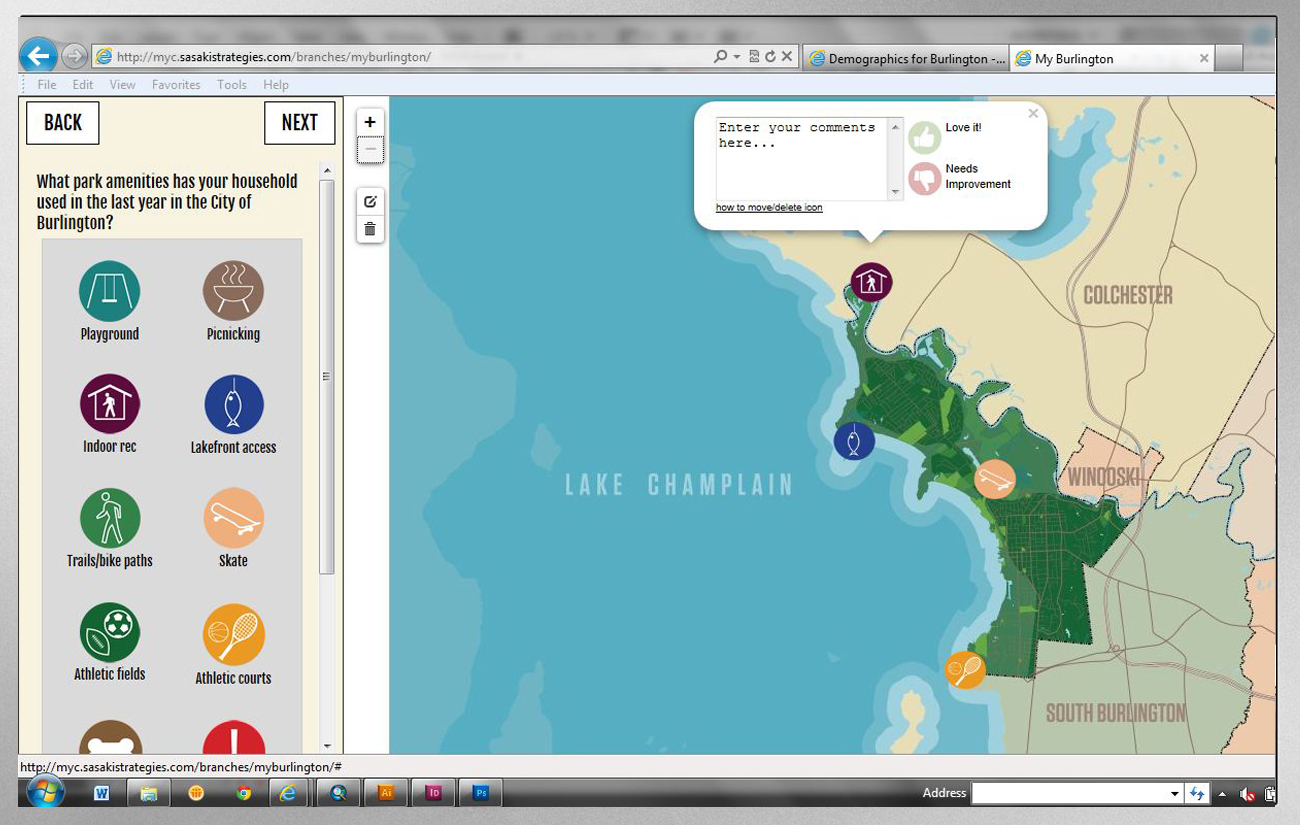
A web-based survey platform collected data on how patrons use the parks
While the plan focused on engaging users of the system, it was just as important to include the perspective of staff and volunteers from across the many departments that help make the system run. By the numbers, over 800 volunteers play a role in the BPRW department annually. These volunteers account for over 11,000 hours of service with a total volunteer value upwards of $250,000 every year. More than sixty local partners and industry and community leaders were invited to participate, including non-profits, businesses, social service organizations, educational institutions, transportation agencies, regional parks & planning agencies, and friends/conservation/athletic/volunteer groups. When it comes to implementing changes on a municipal level, the value of community buy-in is immeasurable; through utilizing outreach strategies throughout the planning process, Burlington has established a basis of trust with the people they serve.
BPRW approached Sasaki to develop an updated brand that represents the department’s future, in support of their master planning effort. We were charged with developing a branding concept that would be easy to identify, represented the organization’s three departments, and would be easy for staff to implement.
We wanted the brand to be approachable, to encourage community engagement, and indicate a sense of modernity—all while tying back to the natural environment. We selected three colors to represent each of the departments—green for parks, orange for recreation, and blue for waterfront—and brought them together into one cohesive scheme. A modern typographic treatment conveys that this is not your typical municipal park department. Additionally, we provided a suite of guidelines for their brand system that stretch seamlessly across small and large applications—from business cards to 14 foot tall regional park signage.
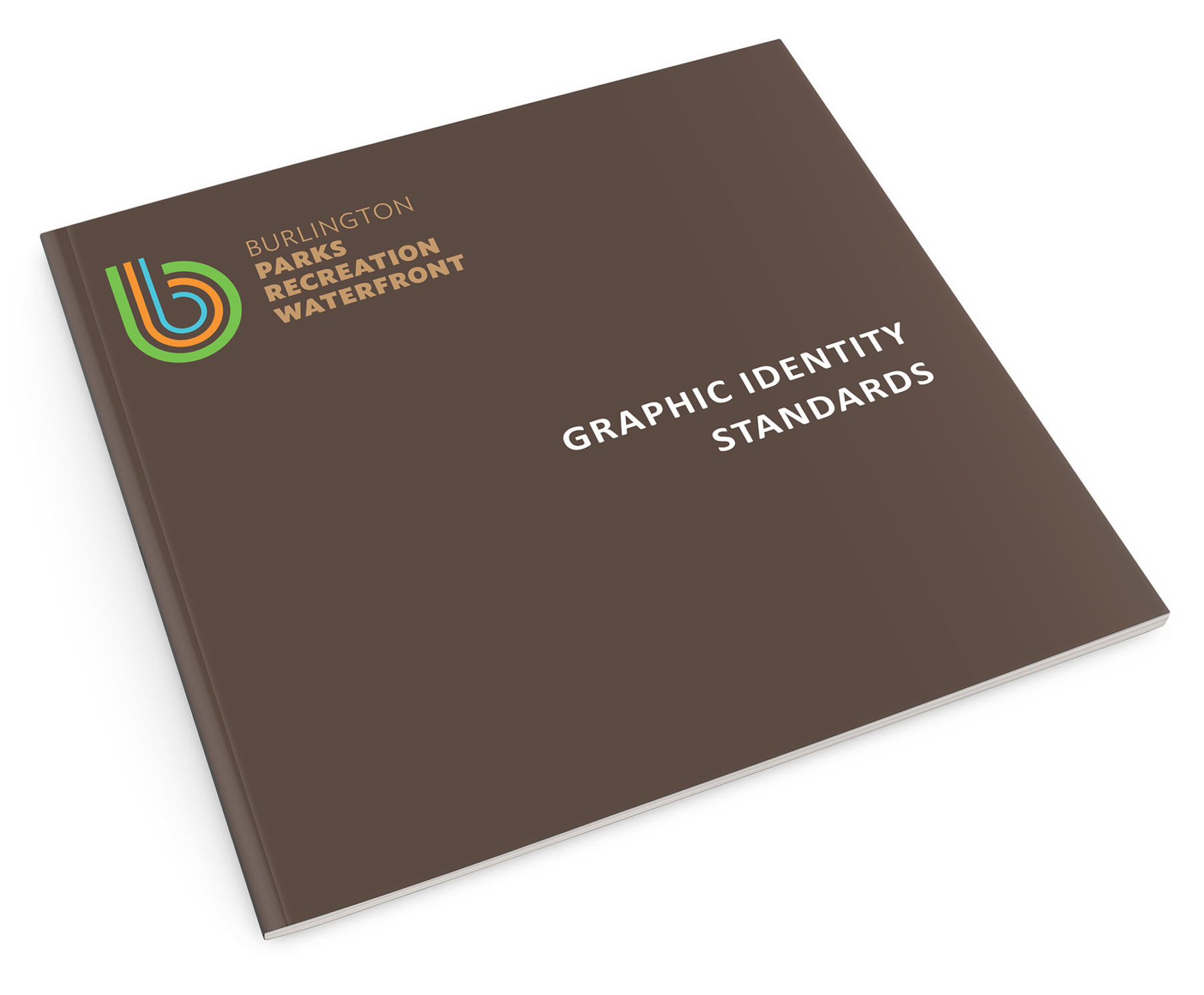
The branding guidelines ensure a consistent roll-out of the BPRW’s new graphic identity
The initial brand roll-out included hats, sweatshirts, business cards, as well as decals for branding departmental vehicles. The final implementation of the parks’ new signage and wayfinding system in the coming months will fully express the brand identity. This signage system communicates the ideals of the brand, bringing them to life in the 3D public realm. The incorporation of high resolution embedded imagery and powder-coated aluminum gives the brand a contemporary and clean feel; pairing this sleek treatment with weathered cedar and oxidized steel references the city’s industrial past.
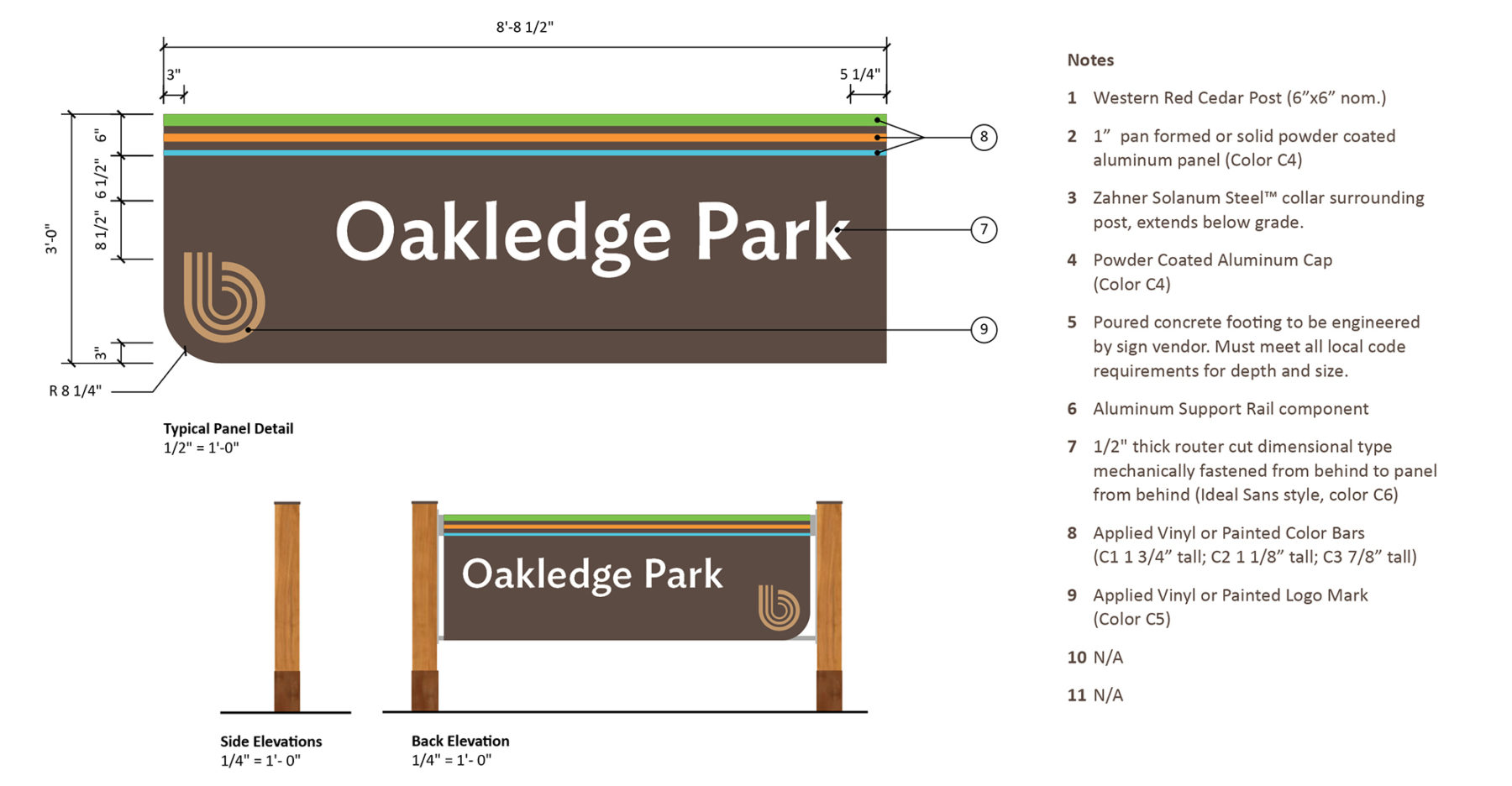
On a recent trip to Burlington to finalize signage placement, we were pleasantly surprised to see the brand already being implemented throughout the parks. We saw decals on rubbish bins, hats on BPRW employees, and a fully-branded new website. It’s great to see the brand embraced, celebrated, and rolled out so quickly.